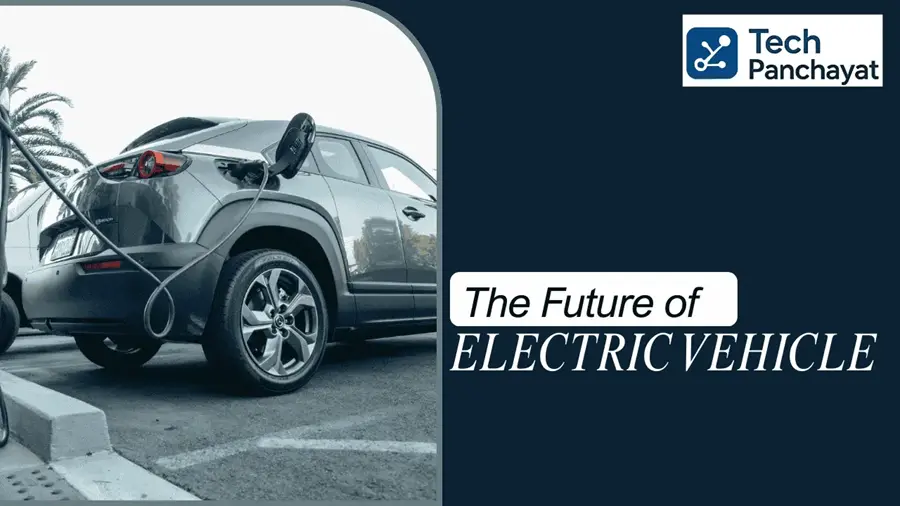The future of electric vehicles in India is one of the most talked-about topics in the mobility and energy sector today. Over the past decade, India has witnessed a dramatic shift in how vehicles are powered, moving away from fossil fuels towards sustainable electric alternatives. This transformation is not just about cars, it extends to two-wheelers, three-wheelers, and even commercial fleets that power logistics across the country. As of now, electric vehicles are no longer a niche innovation but a rapidly expanding reality that is reshaping consumer behavior, government policy, and the automobile industry.
The Indian government has set ambitious targets to cut carbon emissions and reduce dependence on imported oil, with electric vehicles playing a central role in this mission. Incentives like subsidies under the FAME II scheme, tax reductions, and growing investment in charging infrastructure are helping bridge the gap between affordability and accessibility. At the same time, rising fuel costs and environmental concerns are pushing more consumers to consider electric mobility as a practical alternative.
Yet, challenges remain. Charging infrastructure needs rapid expansion, battery costs must fall further, and consumer awareness has to grow beyond major urban cities. Still, the momentum is undeniable. With both global manufacturers and Indian startups investing heavily, the future of electric vehicles in India looks stronger than ever. This blog explores adoption trends, government initiatives, key opportunities, challenges, and the road ahead for India’s electric mobility revolution.
Electric Vehicle (EV) Penetration in India: Progress from 2020 to 2030
India’s electric vehicle (EV) journey has evolved significantly over the past few years. Starting with limited adoption in 2020, the country has seen a rapid increase in EV penetration driven by supportive government policies, increased awareness, and expanding charging infrastructure. The table below highlights key milestones and projections in EV adoption from 2020 to the government’s 2030 target.
| Year / Target | Electric Vehicle Penetration in India | Key Highlights |
|---|---|---|
| 2020 | ~1.3% of total vehicle sales | Early adoption stage, mostly electric two-wheelers and e-rickshaws, limited charging infra. |
| 2025 (Now) | ~7.8% penetration across vehicle categories | Strong growth in two- & three-wheelers, government duty cuts, ~25,200 charging stations, Tier 2/3 city adoption rising. |
| 2030 (Target) | ~30% of total vehicle sales (Govt. target) | Expected boom in affordable electric vehicles, global brands entering, stronger domestic manufacturing, charging infra scaling rapidly. |
Growth of Electric Vehicles in India
The growth of electric vehicles in India has accelerated significantly in the last five years. From being limited to early adopters and eco-conscious consumers, electric mobility is now reaching the mainstream. Two-wheelers and three-wheelers have been the strongest growth drivers due to lower upfront costs, affordable running expenses, and increasing penetration in smaller towns.
Passenger electric cars are also gaining traction, with companies like Tata Motors Electric Vehicles, Mahindra Electric, Hyundai Electric Cars , and BYD India launching affordable options for Indian buyers. In addition, commercial fleets, including taxis and last-mile delivery services, are adopting electric vehicles to cut operating costs.This rapid growth showcases how the future of electric vehicles in India is shifting from aspiration to adoption.
Government Initiatives Shaping the Future of Electric Vehicles in India
The Indian government is playing a crucial role in shaping the future of electric vehicles in India through multiple schemes and policies. Some key steps include:
- FAME II Scheme – Provides subsidies and incentives for electric vehicle buyers and manufacturers.
- PLI Scheme for Advanced Chemistry Cells – Encourages domestic battery production to reduce dependency on imports.
- Tax Benefits – GST on electric vehicles is just 5%, compared to 28% on petrol and diesel vehicles.
- Charging Infrastructure Push – By 2025, India already has more than 25,000 public charging stations, with plans to expand aggressively.
These policies ensure that both consumers and manufacturers are motivated to adopt cleaner mobility solutions.
Key Challenges for Electric Vehicles in India
Despite rapid growth, the path ahead for the future of electric vehicles in India is not without hurdles:
- Charging Infrastructure – Limited availability in semi-urban and rural areas slows adoption.
- High Battery Costs – Battery remains the most expensive component, impacting vehicle affordability.
- Range Anxiety – Consumers still fear long-distance travel due to limited fast-charging options.
- Grid Dependency – Increased reliance on electricity could stress India’s power supply if renewable energy capacity does not expand simultaneously.
Opportunities Driving the Future of Electric Vehicles in India
The future clearly indicates strong opportunities for both businesses and consumers. While challenges exist, the opportunities for growth are massive:
- Domestic Manufacturing – Make in India initiatives can position India as a global hub for electric vehicle production.
- Job Creation – From battery plants to charging infrastructure, new jobs are emerging across industries.
- Export Potential – Affordable electric vehicles designed for India could be exported to other developing nations.
- Sustainability Goals – Helping India meet its net-zero emissions target by 2070.
Role of Startups and Global Players
The future of electric vehicles in India is not just driven by established automakers. Startups like Ola Electric, Ather Energy, and Ultraviolette Automotive are redefining the two-wheeler market with innovation. Global giants like Tesla, Hyundai, and BYD are also eyeing India as a key growth market. This mix of domestic and international participation ensures a healthy balance of competition, innovation, and affordability.
Future Outlook: 2025 to 2030
This trajectory makes electric mobility not just a trend but a long-term reality. Looking ahead, the future of electric vehicles in India appears highly promising:
- By 2030, 30% of all vehicles sold are expected to be electric.
- Two-wheelers and three-wheelers will lead the charge, followed by passenger cars and buses.
- Charging infrastructure is projected to cross 100,000 stations by 2030.
- Falling battery prices will make electric vehicles more affordable than traditional petrol or diesel vehicles.
Conclusion
The future of electric vehicles in India is evolving rapidly, driven by strong government support, technological advancements, and rising consumer interest. While challenges like charging infrastructure and battery affordability need urgent attention, the overall growth path is clear and irreversible. India is no longer asking if electric vehicles will dominate, but when.
By 2030, electric mobility will form a significant share of India’s transportation ecosystem, reducing carbon emissions, cutting fuel imports, and creating a sustainable future for generations to come.Stay Tuned with Techpanchayat for Latest tech Insights.

